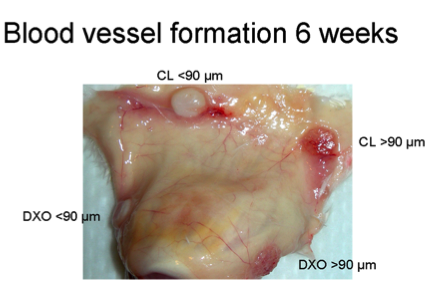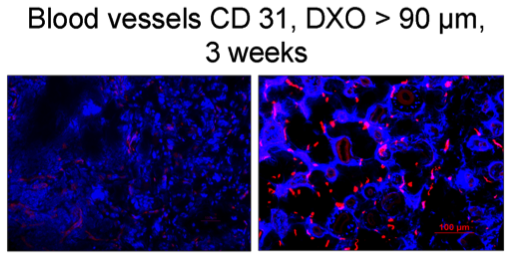Development of new polymer scaffolds for stimulation of stem cell growth for bone tissue engineering
In this project we are trying to combine the principles of biology and engineering to develop viable substitutes to restore function of human bones and by doing so, in the future have the possibility to enhance the treatment of patients with different types of bone defects both from a functional and esthetic point of view.
Main content
Two different types of copolymer scaffolds, poly(LLA-co-DXO) and poly(LLA-co-CL), with varying pore size and different mechanical properties have been tested using poly(LLA) as a control.
To determine the biocompatibility of the materials, periodontal ligament cells and osteoblast were seeded onto the scaffolds. To determine growth and proliferation and the expression of certain growth factors Scanning Electron Microscopy, MTT and Elisa was used.
Further, to determine tissue responses and blood vessel formation in and around the scaffolds an in vivo subcutaneous mouse model was used. After implantation of the scaffolds for 3 or 6 weeks analysis were made using histology (H&E) and immune histology (markers CD 31, CD 3, CD 19, CD 11b).
The scaffold materials were also tested in an in vivo co-culture study using a calvarial defect model. The scaffolds were implanted with and without endothelial- and osteoblast like cells, left to heal for three months and then analyzed with regard to general healing of the defects, bone regeneration and the expression of bone markers using radiographic examination, histology (Masson´s trichrome), immune histochemistry (BMP2) and quantitative real-time reverse transcriptase-polymerized chain reaction analysis of bone markers.
Principal investigator: Kamal.Mustafa@iko.uib.no

